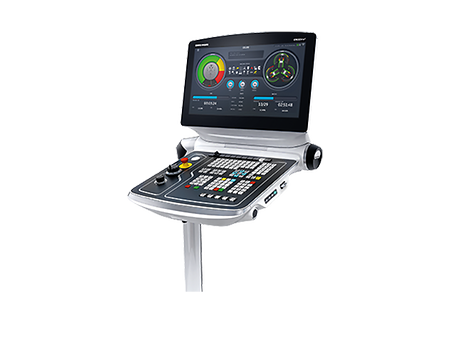


LASERTEC Shape: Laser Ablation Machines
Laser ablation and texturing machines
- 3D laser ablation for the production of miniature molds, extrusion dies, inscriptions and engravings
- Complex and demanding textures in 3D freeform surfaces
- Contour parallel laser shaping for fast process flow
- The right machine concept for each application
- CELOS: The app based control and operating system
- Exclusive DMG MORI technology cycles available
ERGOline 21.5" Multi Touch Panel with CELOS and SIEMENS SINUMERIK 840 D sl
Efficient production with contactless laser machining
With the LASERTEC Shape series, DMG MORI offers an efficient and productive solution for 3D laser ablation. The LASERTEC Shape series has a broad range of applications. On the one hand, it is distinguished by a high level of process reliability and, on the other, by its 100-percent-reproducable material removal. The noncontact material processing of components using laser beams makes it possible to produce technical miniature molds, press dies, and embossing tools—entirely without conventional electrode manufacturing or tool wear. This saves resources and accelerates the entire industrial manufacturing process.
LASERTEC Shape machines are also used for laser texturing of geometrically defined surfaces. With the laser ablation method, complex textures and structures can be created on free-form surfaces. Engraving and laser marking are possible, too. This method is primarily used in the production of injection molds for mold making. This is because texturing provides products such as PET bottles or electronic products with additional technical qualities. Scratch-resistant, super-matte, or hydrophobic surfaces are just some real-world examples that are increasingly being used in everyday applications.
Femtosecond lasers: Laser ablation without heat input into hard materials
The heart of the LASERTEC Shape machines is the laser source. This is why the five-axis LASERTEC 50 Shape Femto is equipped with a femtosecond laser. The ultrashort pulse laser can remove thin layers both from standard materials and from wear-resistant advanced materials like hard metal, glass, and ceramics. This is done without heat input into the material. This is an effective way of avoiding cracks and material stresses. This significantly increases the service life of hard-metal embossing dies. The precise laser beam also creates cavities with flank angles of up to 10° and an internal corner radius as low as 0.03 mm. The surface quality reaches Ra < 0.1 µm, ensuring that the highest quality standards are met.
Intelligent features for high-end processing
With travel distances of 500 × 460 × 700 mm, the LASERTEC 50 Shape Femto offers ample space to process a range of components. With linear drives in the X- and Y-axes, as well as torque motors in the two rotary axes, the laser precision machine achieves high acceleration values. This ensures dynamic production processes. The CNC machine also has a compact design. At a footprint of just four square meters, it also fits into tightly spaced production environments. DMG MORI has specifically tailored the features of the LASERTEC 50 Shape Femto machine for high-end machining applications. The laser source has various tuning options with variable pulse lengths and burst modes. The positioning accuracy of ≤ 8 µm means you can work with high precision. A CCD camera and a 3D touch probe mean that the machines are incredibly quick to set up.
Automated laser machining for maximized productivity
To further boost the cost-effectiveness of LASERTEC Shape technology, DMG MORI offers automation solutions for the LASERTEC 50 Shape Femto. Like the PH 50 pallet handling system, which makes an effective contribution to both manned and unmanned night shifts.
Laser ablation: a quick summary
What is laser ablation?
With laser ablation, structures on a material’s surface are evaporated layer by layer. Here, intricate embossing dies, miniature structures, and complex textures can be created on surfaces without the conventional use of electrodes.
What are the advantages of using femtosecond lasers?
Femtosecond lasers belong to the category of ultrashort pulse lasers. They have a pulse duration one trillion times shorter than a human blink of an eye. During laser ablation, the laser pulses strike the component. Their energy is then absorbed by the electrons of the material and transferred to the atomic nuclei. As a result, the material sublimates at a high level of locality, without heating the surrounding material. The result is a process that handles materials in a supremely gentle way.
What makes laser ablation so economical?
Since no electrodes have to be produced, the manufacturing process with laser ablation is significantly simpler and faster than with sink erosion. Since no wearing electrodes are involved and the rougher surface typical of sink erosion is avoided, the technology is also significantly more repeatable and reliable.
